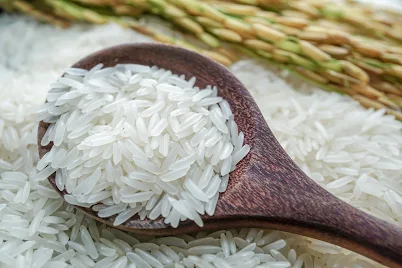Rice: How much is enough? Learn what the experts say and learn what portion sizes are appropriate and why you should eat them
Rice is a staple food for millions of people around the world. It is a versatile grain that can be incorporated into a variety of dishes, making it a popular choice for many meals. However, there is often confusion about how much rice is enough and what portion sizes are appropriate. In this article, we will explore what the experts say about rice consumption and why you should include it in your diet.
How much rice should you eat?
When it comes to rice consumption, portion sizes vary depending on individual needs and dietary goals. The recommended serving size for rice is typically around 1/2 cup of cooked rice. This portion size provides approximately 100-150 calories.
However, it is important to note that portion sizes may vary depending on factors such as age, gender, level of physical activity, and overall health. It is advisable to consult with a registered dietitian or nutritionist to determine the right portion size for you.
The benefits of including rice in your diet
Rice is a nutritious grain that offers several health benefits. It is a good source of complex carbohydrates, which provide energy for the body. Rice also contains essential vitamins and minerals such as iron, magnesium, and B vitamins.
Additionally, rice is low in fat and cholesterol-free, making it a heart-healthy choice. It is also suitable for individuals following gluten-free or vegan diets. The high fiber content in rice promotes healthy digestion and may help with weight management.
What do the experts say about rice consumption?
Experts generally agree that rice can be part of a healthy, balanced diet. The American Heart Association recommends replacing refined grains with whole grains, such as brown rice, for increased nutritional benefits. Whole grains retain more fiber, vitamins, and minerals compared to refined grains.
The World Health Organization also emphasizes the importance of consuming a variety of grains, including rice, to meet nutritional needs. They recommend prioritizing whole grains and avoiding excessive consumption of refined grains and processed rice products.
How to incorporate rice into your meals
Rice can be a versatile addition to your meals. Here are some ideas for incorporating rice into your diet:
- Stir-Fry: Prepare a delicious vegetable stir-fry and serve it over a bed of steamed rice.
- Fried Rice: Transform leftover rice into a flavorful fried rice dish by adding vegetables, protein, and seasonings.
- Rice Bowls: Create a nutritious rice bowl by combining cooked rice with lean protein, such as grilled chicken or tofu, and a variety of colorful vegetables.
- Rice Salad: Make a refreshing rice salad by mixing cooked rice with fresh vegetables, herbs, and a light dressing.
- Rice Pudding: Indulge in a sweet treat by making a creamy rice pudding using cooked rice, milk, sugar, and your favorite flavorings.
Conclusion
Rice is a versatile and nutritious grain that can be enjoyed in moderation as part of a healthy diet. The appropriate portion size of rice depends on individual needs and dietary goals. It is essential to consult with a healthcare professional or registered dietitian to determine the right portion size for you. By including rice in your meals, you can take advantage of its many health benefits while enjoying its delicious taste. So, next time you're cooking, don't forget to add a serving of rice to your plate!
Meta Description: Discover the appropriate portion sizes of rice and the health benefits of including it in your diet. Learn what the experts say and how to incorporate rice into your meals for a balanced and nutritious lifestyle.

Comments
Post a Comment